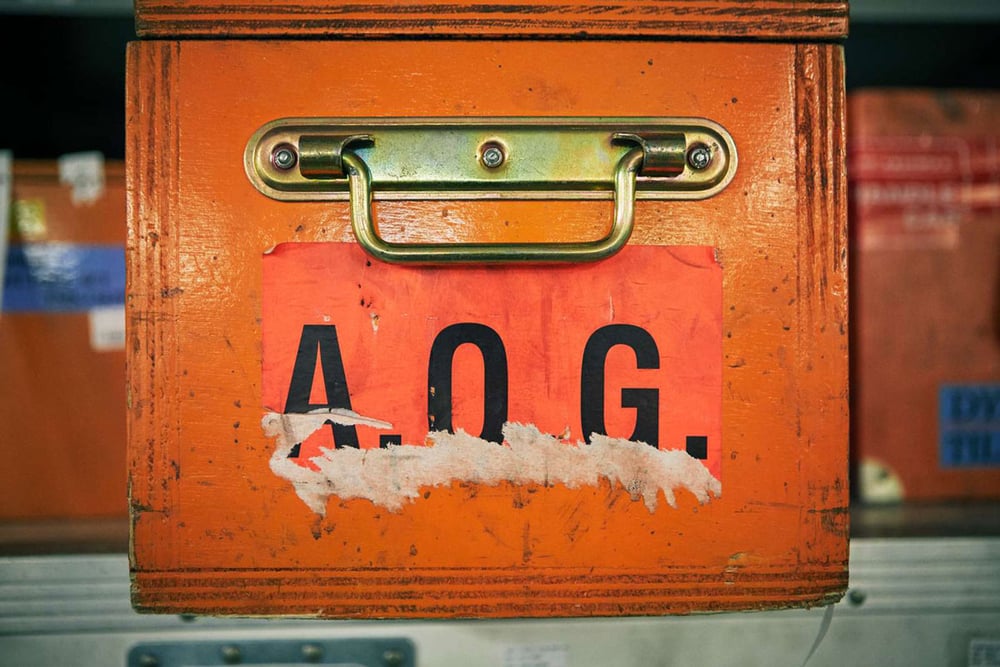
Initial Provisioning (IP) or Power-by-the-hour (PBH)? Both solutions have their strengths, but in today's data-driven aviation industry—where time is almost a literal currency and efficiency is a key factor in gaining or maintaining a competitive advantage—is there one solution that comes out on top?
In this article, we will look at the broad implications of provisioning strategies based on these two options. We will compare the broad strokes of IP and PBH to look at two of the primary decision factors—overall cost and parts availability.
Right out of the gate, it's clear that taking an initial provisioning approach to spare parts is at a disadvantage in regards to initial start-up cost. This is, of course, due to the up-front investment required to cover the entire specified spares inventory outlined for the provisioning period. With Airbus IP, the recommendation provided is for the first 12 months of operations.
RELATED ARTICLE:
Is Initial Provisioning an investment in peace of mind?
Depending on the size of the airline, it could also require additional funding for the housing of the spares inventory and material management training.
In contrast, Power-by-the-hour typically doesn't have the same level of up-front investment, yet that does not immediately deem it the more economical solution. In speaking with our Head of Provisioning Support, Claudia Kronisch, she explained:
"IP is not necessarily more expensive than a PBH coverage. PBH fees usually depend on the contract time, part-number scope, fleet size and utilisation, potential on-site stock, lead time for availability of covered spare parts from central PBH warehouse, amongst others."
Typically Power-by-the-hour contracts cover 8-12 years. During that time, a customers' consumption of specific parts numbers will be regularly accessed and renegotiated depending on usage. The same applies to extensions to a part-number scope. All of this affects the PBH fees.
ALL THE INFORMATION:
The Definitive Guide to Initial Provisioning of spare parts
Usually, PBH fees also need to be paid if there are no replacements during a year or a defined period, meaning the customer is not credited if no usage is made of the PBH contract.
So while the start-up investment for an Initial Provisioning solution will be more, there are many outside factors—parts availability, extended AOG's, overstock and a lack of buy-back options—that could contribute to a Power-by-the-hour solution being more expensive over time.
Explore the long-term ROI and peace-of-mind provided by Satair Initial Provisioning when investing in a new fleet. You might find the benefits surprising. Fill in your information below and a Satair expert will assist you shortly.
With the number of global flights projected to exceed 40.3 million by the end of this year, the necessity for airline operational efficiency has never been essential for maintaining competitiveness. Passengers have an increased expectation of on-time and trouble-free travel, which essentially means that airlines need to avoid extended AOG times at all costs.
When it comes to the provisioning strategies of new fleets or newly acquired used aircraft, accuracy and dependability in regards to spares availability are essential.
RELATED ARTICLE:
Effective Supply Management: How initial Provisioning can create a culture of efficiency

In this area, Initial Provisioning has a key advantage due to customers controlling all of their own data, stock availability, management and maintenance strategies.
"IP recommendations cover the first year of operation of a new fleet for one main base. If IP recommendations are respected, the customers can benefit from the buy-back of surplus or unused IP stock," explains Kronisch. "Furthermore, it is easier for the customer to adapt their stocks depending on their unique operational experience for the relevant fleet after a certain time."
Power-by-the-hour solutions may circumvent some of the more cumbersome requirements of maintenance and material management by out-sourcing those to various operators bases. It can be subject to many uncontrollable factors that can hamper material availability. Market shifts, geopolitical situations like Brexit, and shifts in maintenance certification requirements can contribute to unpredictability when it comes to having a specific part available, exactly when it is needed.
Power-by-the-hour often follows the logic of central warehousing with optional on-site stocks at the operator's bases. This means that for the majority of the part numbers covered by a PBH, a logistics process is also needed to make those spare parts available to the customer. Generally—for any parts outside of on-site stock—this means it takes longer to have a PBH spare part available for replacement on the aircraft compared to an own IP stock. It becomes even less reliable when outside variables disrupt that logistics process.
Because an Initial Provisioning solution does require a more substantial upfront investment than a Power-by-the-hour provisioning strategy, it is not the right answer for everyone. Inventory space, material management expertise, and the traditional 12 months of spares stock can inflate budgets by the millions. For smaller or start-up airlines that might not have this type of capital to invest, Power-by-the-hour remains a healthy and viable option for entering aircraft into the market.
RELATED ARTICLE:
When is Initial Provisioning the right option for you?
The central caveat to this, of course, is the lack of control in-stock availability and maintenance reliability that an airline gains by securing the upfront investment in an Initial Provisioning solution.
Both are viable options, so it really comes down to asking how much is peace of mind worth?
Join our newsletter
This blog is driven by Satair Marketing & Communication with input from both internal and external contributors.
Satair is a world leading provider of aftermarket services and solutions for the civil aerospace industry. Satair is a stand-alone company and Airbus subsidiary.